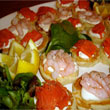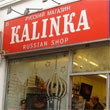
After visiting M&S and discovering their Russian blini offer for the Easter weekend, I was inspired to turn my hand to making my own. Although I would normally scoff at the use of packet pancake mix, I thought, in the name of research I should try one of the box of blini mix sold at Kalinka on Queensway (www.kalinkafood.co.uk).
“Round is the blin, yellow gold and hot like the sun, the symbol of sublime days, rich harvests, harmonious marriages and healthy children,” is how the Russian poet, Alexander Kuprin (1870-1983) described the light pancakes.
In pre-Christian Rus’ blini were eaten on feast days in honour of Wolos, patron saint of fertility, cattle and the arts. The original form of the word blin was mlin, deriving from the Russian word for milling and referring to the dish made from the ground grains.
Blini continue to be one of the favourite foods in Russia today and are sold on every corner in Moscow and elsewhere. However, true Muscovites get together with friends for a blini feast. Traditional blinis are wafer thin and made on a cast-iron skillet. The original recipe for blinis is two-thirds buckwheat flour and one-third wheat flour. This is refined with rich cream and frothy beaten egg whites. Sour cream can be used as a substitute for the cream and creates a heartier blini. Blinis made from buckwheat flour alone are called red blini due to their dark colour.
Soft, porous and with transparent bubbles, means the blinis soak up melted butter and cream wonderfully. The cooked pancakes are best eaten hot with butter, cream, honey, cranberry jelly, pickled herring, smoked salmon or caviar. On feast days they can also be served with offal or beef. The pancakes are served in every home during Butter Week, during which Christians prepare themselves for Lent (although it is originally a Slavic pagan feast which ushered out the winter and welcomed the spring).
I chose to use the blinis as part of a selection of canapes. Unfortunately, due to my meagre salary, I did not invest in a small jar of caviar and instead opted to team the blinis with Alaskan smoked salmon and prawns. I served these with Hungarian stuffed mushrooms, the recipe of which will be in The Perfect Canapes: Part 2.
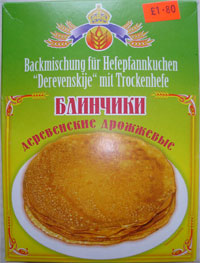
Pour the packet of baking mix into a large bowl.
Pour in the packet of dry yeast.
Make a well in the middle.
Pour in 250 ml of warm water or milk
(I used milk which meant the blinis were quite dense, for a thinner mix, use water)
Stir until the mix becomes a dough.

Cover with either a clean tea towel or cling film.
Leave to prove somewhere warm for 30 minutes.
Heat a frying or griddle pan over a medium heat.
Use a spoon to put a little of the mixture in the pan.
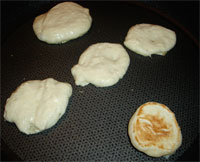
A good tip is to have a cup of cold water to put the spoon in. The mixture is very sticky and the water on the spoon will help the mixture to fall off.
When some bubbles appear on the surface of the uncooked side, and it goes a little shiny, turn with a palette knife.
Leave to cool.
Add a teaspoon of creme fraiche to each blini.
Add some smoked salmon or prawns to each blini.
Season with black pepper.
Squeeze over lemon juice (lemon rind can also be sprinkled over for a decorative effect, or if you want a traditional Russian taste, some dill).
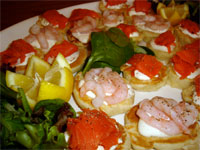
Close up
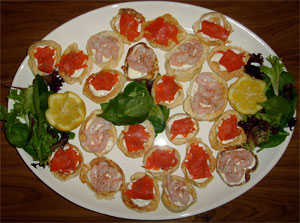
Blini Platter
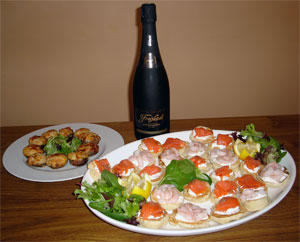
Serve canapes with chilled cava
If you would rather make the blinis from scratch you will need:
3 tsp dry yeast
3 tbsp sugar
2 cups/500 ml lukewarm milk
25g butter, softened
300g buckwheat flour
200g all-purpose flour
2 eggs, separated
1 tsp salt
175g sour cream
Butter for frying

